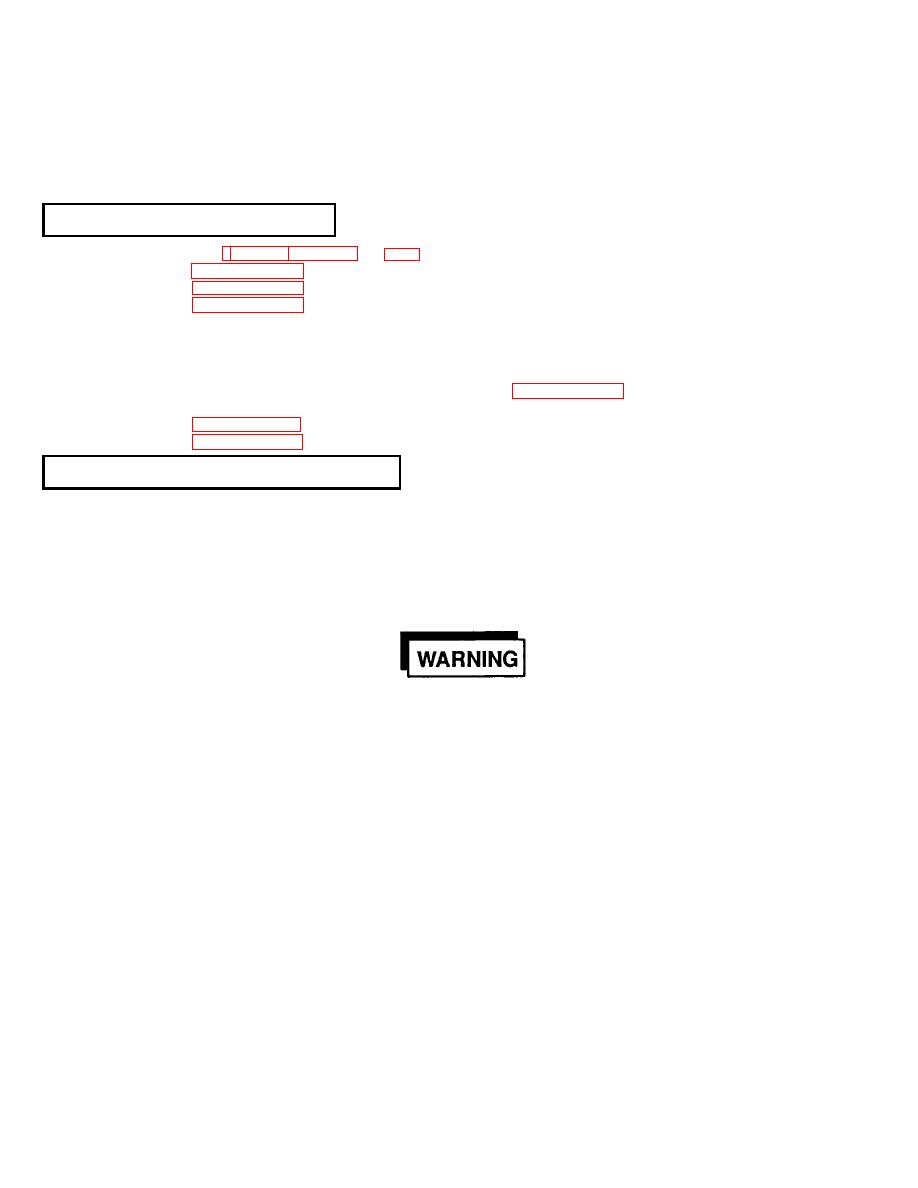 |
|||
|
|
|||
|
|
|||
| ||||||||||
|
|
 TM5-4110-234-14
TO 40R7-5-7-1
Lift the bell-crank armature off.
Lift the contact assembly out and inspect for pitting, corrosion and obvious defects or wear. If they are bad
replace them. Do not attempt to file or dress these contacts.
If replacement of any contact is indicated it is recommended that the complete set be replaced.
Reverse the procedure to reassemble.
5-4.
FAN SHAFT REPLACEMENT
a.
Removal. (See figs. 54 and 4-22 or 4-23 as applicable).
(1) See paragraph 5-13 and remove the condenser coil and shroud.
(2) See paragraph 4-41 and remove the evaporator fan.
(3) See paragraph 4-50c and remove all items necessary to remove the flange bearing.
(4) Slip the fan shaft out of the condenser coil opening.
b.
Installation.
(1)
Slip the flange bearing onto the fan shaft and see paragraph 4-50d for installation of fan shaft drive
items.
(2)
See paragraph 4-41 and install the evaporator fan.
(3)
See paragraph 5-13 and install the condenser coil and shroud.
5-5.
REFRIGERATION SYSTEM REPAIRS
The refrigeration system must be pumped down and in some actions totally discharged before any maintenance
is performed on system components. Be sure that all refrigerant in the section of the system that you are working on has
been discharged. Read and understand all instructions prior to attempting repairs. Leak testing and dehydrator
replacement are required after any system component has been removed and replaced. The section of the system that
was opened must be evacuated before it is charged. The system must be properly charged to function properly.
DANGEROUS CHEMICAL
is used in this equipment
DEATH
or serious injury may result if
personnel fail to observe proper safety precautions. Great care must be exercised to prevent contact of
liquid refrigerant, or refrigerant gas discharged under pressure, with any part of the body. The extremely
low temperature resulting from the rapid expansion of liquid refrigerant, or refrigerant gas released under
pressure, can cause sudden and irreversible tissue damage through freezing. As a minimum, all
personnel must wear thermal protective gloves and a face shield or goggles when working in any situation
where refrigerant contact with the skin or eyes is possible. Application of excessive heat
to any
component in a charged system will cause extreme pressure that may result in a rupture, possibly
explosive in nature. Exposure of Refrigerant-12 to an open flame or a very hot surface will cause a
chemical reaction in the gas to form carbonyl chloride (phosgene), a highly toxic and corrosive gas. In its
natural state, Refrigerant-12 is a colorless, odorless vapor with no toxic characteristics. It is lighter than
air and in a well ventilated area will disperse rapidly. However, in an unventilated area it presents danger
as a suffocant.
5-3
|
|
Privacy Statement - Press Release - Copyright Information. - Contact Us |